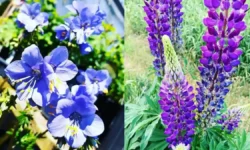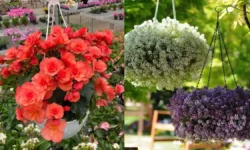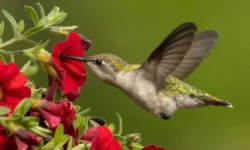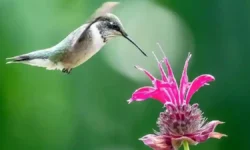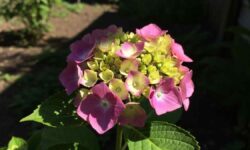The Bird of Paradise is one of the most striking ornamental plants, admired for its large banana-like leaves and exotic flowers resembling a bird in flight. While it is a hardy and relatively low-maintenance plant, regular trimming is essential to maintain its lush appearance, encourage healthy growth, and prevent diseases. Proper pruning not only enhances its beauty but also ensures long-term health by removing damaged or aging leaves and spent flowers.
In this detailed guide, you will learn when and how to trim Bird of Paradise properly, along with expert techniques to keep it thriving all year round.
Table of Contents
Understanding the Importance of Pruning Bird of Paradise
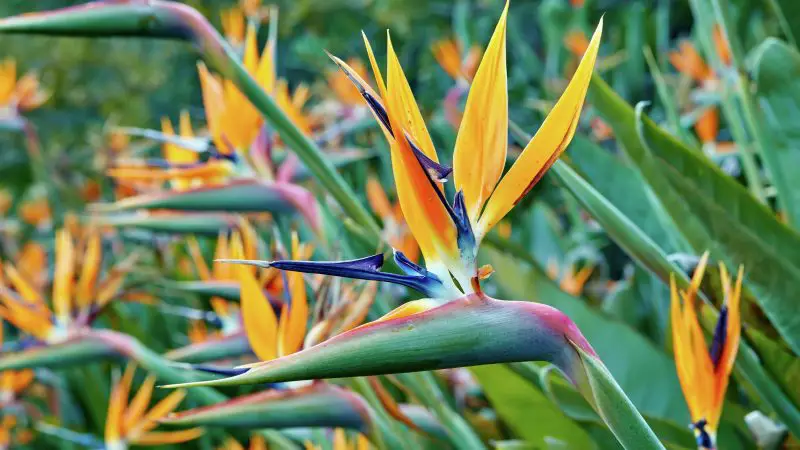
Pruning plays a vital role in the health and aesthetic appeal of Bird of Paradise plants. As the plant matures, older leaves naturally yellow, brown, or become tattered from wind and environmental stress. Leaving these damaged leaves can harbor pests and diseases, which may spread to healthier parts of the plant. Regular trimming removes this unwanted growth, keeping the plant vigorous.
Another significant reason to prune Bird of Paradise is to encourage flowering. Removing old flower stalks redirects the plant’s energy into producing new blooms rather than sustaining dying or spent ones. Additionally, pruning opens up the plant’s center, improving air circulation and reducing the risk of fungal infections, especially in humid environments.
When to Trim Bird of Paradise for Best Results
Ideal Seasonal Timing for Pruning
The best time to prune Bird of Paradise is during late winter or early spring, just before new growth begins. This timing allows the plant to recover quickly and focus its energy on fresh leaves and flowers as the growing season starts. Pruning at this time also ensures that the plant maintains a compact and attractive shape throughout spring and summer.
For tropical and subtropical regions where Bird of Paradise grows year-round, pruning can be done any time the plant shows signs of aging leaves or spent flowers. However, heavy pruning should still be reserved for early spring to avoid stressing the plant during its active flowering period.
Signs That Your Plant Needs Trimming
Recognizing when your Bird of Paradise requires trimming is essential for maintaining its health. Yellowing or browning leaves are a clear indicator that pruning is necessary. Leaves with tears caused by strong winds or physical damage should also be removed, as they can attract pests. If the plant appears crowded or its new growth is struggling to emerge, thinning out older leaves will help it regain vitality.
Spent flower stalks are another key sign. Once a flower fades and its stalk begins to dry out, trimming it encourages the plant to produce new blooms instead of wasting energy on the old stalk.
Tools and Preparation Before Pruning
Choosing the Right Tools
Having the correct tools ensures clean cuts and minimizes damage to the plant. Sharp pruning shears are essential for cutting smaller leaves and flower stalks, while loppers may be necessary for thicker stalks on mature plants. For very large Bird of Paradise plants, a pruning saw can be used to remove tough or woody stems.
Always clean your tools with rubbing alcohol or a disinfectant before and after pruning. This step prevents the spread of diseases between cuts or from one plant to another.
Preparing the Plant for Trimming
Before starting, inspect the plant carefully to identify all the damaged, aging, or dead leaves that need removal. Clear away any debris around the base of the plant to ensure you can easily access the lower stalks. Wearing gloves is recommended, as some older leaves can be tough and may have sharp edges that could irritate your hands.
How to Trim Bird of Paradise Properly
Removing Damaged or Aging Leaves
To remove a damaged or old leaf, trace its stalk down to the base of the plant where it meets the main crown. Cut the stalk as close to the base as possible without damaging nearby healthy growth. Leaving stubs can lead to rot, so always ensure a clean cut. For younger plants, be careful not to accidentally cut emerging new shoots.
If a leaf is partially damaged but still mostly healthy, it is better to leave it intact. Bird of Paradise plants rely on their large leaves for photosynthesis, and removing too many at once can slow growth.
Trimming Spent Flower Stalks
Once a flower has completely faded and the stalk begins to dry or turn brown, it should be removed. Cut the flower stalk near its base, taking care not to damage surrounding healthy stems. Removing spent flowers promptly encourages the plant to produce new blooms faster, keeping it vibrant throughout the growing season.
Thinning Overcrowded Growth
Over time, Bird of Paradise plants can become dense, with multiple stalks competing for space and light. Thinning out some of the older, less vigorous stalks opens up the plant, improving airflow and allowing sunlight to reach new shoots. This process helps prevent fungal diseases and keeps the plant looking neat and structured.
Shaping the Plant for Better Appearance
Trimming can also be used to shape the Bird of Paradise, especially if it is growing unevenly. Focus on maintaining a balanced appearance by selectively removing stalks that disrupt its natural symmetry. Always step back periodically during pruning to assess the plant’s overall shape and avoid over-trimming.
Caring for Bird of Paradise After Pruning
Watering and Fertilizing Post-Pruning
After pruning, water the plant deeply to help it recover from the stress of trimming. Ensure the soil drains well to avoid waterlogging, which can lead to root rot. Fertilizing after pruning can also be beneficial, especially in spring. A balanced fertilizer with equal parts nitrogen, phosphorus, and potassium will encourage healthy leaf and flower growth.
Monitoring for Pests and Diseases
Fresh cuts can sometimes attract pests or become entry points for fungal infections. Inspect the plant regularly after pruning, and remove any signs of pests like aphids or scale insects immediately. Applying a mild insecticidal soap or neem oil can help protect new growth from infestations.
Common Mistakes to Avoid When Pruning
Over-Pruning Healthy Leaves
One of the biggest mistakes is removing too many healthy leaves at once. The Bird of Paradise relies on its leaves for energy production, and excessive pruning can slow growth and delay flowering. Only remove leaves that are clearly damaged, dead, or old.
Cutting Too Close to the Crown
Another common mistake is cutting too deeply into the base of the plant. Damaging the crown can lead to infection and may stunt future growth. Always make cuts just above the crown without slicing into it.
Pruning at the Wrong Time
Heavy pruning during peak flowering season can reduce the number of blooms. Always schedule major trimming during late winter or early spring, when the plant is preparing for active growth.
Encouraging Healthy Growth Through Regular Maintenance
Consistency in Pruning Practices
Pruning should not be a one-time task. Regular light maintenance every few months keeps the Bird of Paradise looking its best. Removing dead leaves as soon as they appear and cutting spent flowers promptly helps maintain the plant’s vigor.
Providing Optimal Growing Conditions
Healthy growth is easier to maintain when the plant receives proper care. Ensure the Bird of Paradise is placed in a location with bright, indirect sunlight or partial sun. Keep the soil consistently moist but well-drained, and feed it with a slow-release fertilizer during the growing season to support lush foliage and vibrant blooms.
FAQs About Trimming Bird of Paradise
When is the best time to trim Bird of Paradise?
The best time to trim Bird of Paradise is late winter or early spring, just before new growth begins. This timing allows the plant to recover quickly and encourages fresh leaves and flowers in the growing season.
Can Bird of Paradise be pruned during summer?
Yes, light pruning can be done in summer to remove yellow or torn leaves and spent flower stalks. However, avoid heavy pruning during peak flowering to prevent stress and delayed blooming.
How often should you trim Bird of Paradise?
Regular light trimming every few months keeps the plant healthy. Remove dead or damaged leaves as soon as they appear and cut spent flower stalks promptly to encourage continuous blooming.
Will trimming make Bird of Paradise bloom more?
Yes, proper pruning redirects the plant’s energy from sustaining old leaves or flowers to producing new growth and blooms. Removing spent flower stalks is particularly important for encouraging more flowering.
Is it safe to cut healthy green leaves?
Healthy green leaves should only be trimmed if they are severely damaged or obstructing new growth. Over-pruning healthy foliage can slow photosynthesis and reduce the plant’s energy reserves.
Conclusion
Learning how to trim Bird of Paradise properly is essential for keeping this exotic plant healthy, vibrant, and full of life. Pruning at the right time, using clean and sharp tools, and focusing on removing only damaged, old, or overcrowded growth will help it thrive for years. With regular maintenance and proper post-pruning care, your Bird of Paradise will reward you with striking leaves and stunning bird-like flowers that make it a standout feature in any garden or indoor space.


